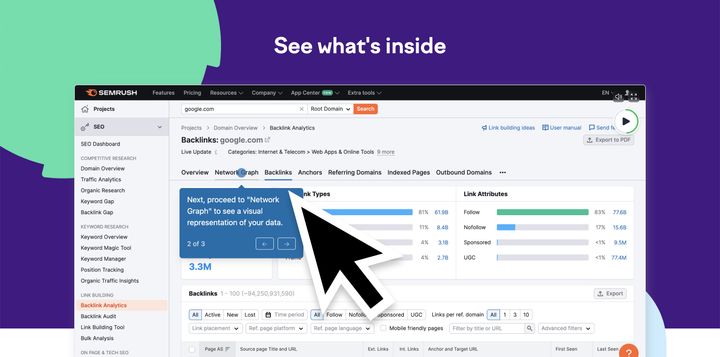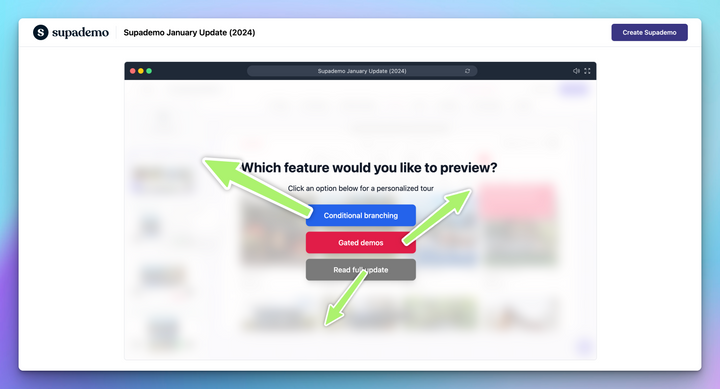In the world of sales, understanding and effectively navigating the sales cycle is essential to closing deals and achieving success. The sales cycle represents the journey a customer takes from initial contact to making a purchase. In this blog post, we will explore the seven key stages of the sales cycle and provide insights on how to use them to close deals successfully. As a Growth Marketer at Supademo, I'm excited to share how interactive demos and guides can be powerful tools at each stage of the cycle.
Q1: What is the significance of understanding the sales cycle for businesses?
- The Sales Cycle: An Overview
The sales cycle is a structured process that sales professionals follow to guide potential customers through the decision-making journey. While the specific stages and their names may vary depending on the industry and the organization, a typical sales cycle can be broken down into seven essential stages:
- Prospecting
- Initial Contact
- Qualification
- Needs Analysis
- Presentation and Demonstration
- Handling Objections
- Closing the Deal
Stage 1: Prospecting
The sales cycle begins with prospecting, where you identify potential customers who may have an interest in your product or service. Key strategies at this stage include:
- Customer Segmentation: Define your ideal customer profile, which helps you identify potential leads more effectively.
- Lead Generation: Use various methods to generate leads, such as content marketing, social media, and networking.
- Build a Lead Database: Organize and maintain a database of potential leads, making it easier to track and reach out to them.
Stage 2: Initial Contact
Once you have a list of potential leads, it's time to make initial contact. This can be through various channels like email, phone calls, or social media messages. Some tips for this stage include:
- Personalization: Tailor your initial contact to the specific lead. Mention something relevant to their industry or needs to catch their attention.
- Value Proposition: Clearly communicate the value of your product or service and how it can solve their problems or meet their needs.
- Establish Trust: Build rapport and establish trust early in the conversation to set a positive tone.
Stage 3: Qualification
Not all leads will be a good fit for your product or service. Qualification is the process of determining whether a lead is a potential customer. To effectively qualify leads:
- Ask the Right Questions: Use a series of questions to understand their needs, budget, and timeline.
- Scoring: Assign a score to leads based on their fit and interest level. This helps prioritize follow-up efforts.
- Disqualification: Be willing to disqualify leads that are not a good fit to avoid wasting time and resources.
Stage 4: Needs Analysis
Once a lead is qualified, it's essential to delve deeper into their specific needs and pain points. This stage involves:
- Active Listening: Pay close attention to what the lead is saying, and ask follow-up questions to uncover their needs.
- Customized Solutions: Tailor your solutions to address the specific challenges and goals the lead has expressed.
- Build Trust: Show that you genuinely care about helping them find the right solution.
Stage 5: Presentation and Demonstration
At this stage, you present your product or service in detail. Effective strategies include:
- Clear Communication: Explain the features and benefits of your product or service in a way that is easy to understand.
- Use Visuals: Visual aids, such as interactive product demos and guides created with Supademo, can help illustrate key points and provide a hands-on experience.
- Address Their Needs: Relate your presentation to the specific needs and challenges the lead has shared.
Stage 6: Handling Objections
It's common for leads to have objections or concerns. Effective objection handling involves:
- Empathetic Listening: Understand the lead's objections, and acknowledge their concerns.
- Provide Solutions: Offer solutions or alternatives to address their objections.
- Reinforce Value: Remind the lead of the value and benefits of your product or service.
Stage 7: Closing the Deal
Closing is the final stage of the sales cycle and the most crucial for achieving your sales goals. Strategies to close the deal include:
- Trial Closes: Throughout the conversation, use trial closes to gauge the lead's readiness to move forward.
- Ask for the Sale: Make a clear and confident ask for the sale. Don't assume the lead will take the next step without your guidance.
- Overcoming Final Objections: Address any last-minute objections or concerns that may arise.
Supademo in the Sales Cycle
Supademo can be a valuable asset throughout the sales cycle:
- Prospecting: Use interactive product demos or guides in lead generation efforts to engage potential customers.
- Initial Contact: Send personalized interactive content to capture the lead's interest.
- Presentation and Demonstration: Create hands-on product demos to showcase the features and benefits of your product effectively.
- Handling Objections: Use interactive guides to address common objections and provide solutions.
- Closing the Deal: An interactive demo can be the final push a lead needs to make a purchasing decision.
Sales Cycle Best Practices
To succeed in the sales cycle, consider these best practices:
- Continuous Learning: Keep learning and improving your sales skills to adapt to changing customer behaviors and expectations.
- Communication Skills: Hone your communication skills, including active listening and empathetic communication.
- Use of Technology: Embrace technology, including CRM software, marketing automation, and interactive tools like Supademo, to streamline your efforts.
- Follow-Up: Effective follow-up is crucial. Maintain regular contact with leads and provide the information they need.
- Analytics and Data: Use data and analytics to track your sales cycle's performance and identify areas for improvement.
Conclusion
In conclusion, understanding and effectively navigating the sales cycle is crucial for sales professionals and businesses seeking to close deals successfully. Each of the seven stages of the sales cycle plays a critical role in guiding potential customers from initial contact to making a purchase. By implementing strategies like personalization, value communication, and effective objection handling, sales professionals can improve their chances of closing deals.
Throughout the sales cycle, Supademo can be a powerful tool to engage leads and provide interactive content that demonstrates the value of your product or service. By using interactive demos and guides, you can create a hands-on experience that resonates with potential customers and helps them make informed decisions.
As you work through the sales cycle, remember to continuously adapt and refine your approach to meet the evolving needs and preferences of your target audience. By following best practices and staying committed to the process, you can improve your sales cycle performance and achieve your sales goals.




